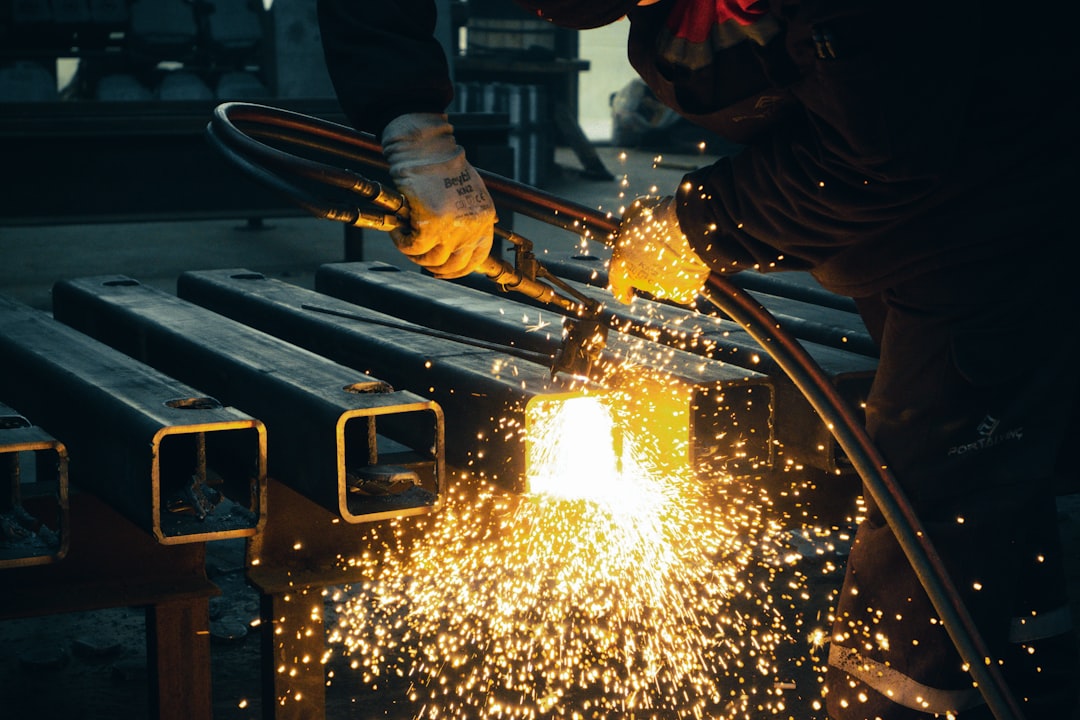In a world increasingly concerned with safety and structural integrity, fire-resistant steel stands as a critical component in safeguarding lives and property. This robust material, capable of withstanding extreme temperatures, plays a vital role in various industries, from construction and manufacturing to aerospace and transportation. This comprehensive guide delves into the fascinating world of fire-resistant steel, exploring its properties, applications, and the science behind its exceptional heat resistance.
Understanding the Science Behind Fire-Resistant Steel
The ability of steel to resist fire isn’t inherent; it’s engineered. Ordinary steel loses its strength and structural integrity at relatively low temperatures (around 500°C or 932°F), undergoing a process called softening. Fire-resistant steel, however, utilizes various techniques to combat this. These techniques often involve alloying steel with other elements like chromium, nickel, molybdenum, and silicon. These additions significantly alter the steel’s microstructure, creating a more stable crystal lattice that resists the detrimental effects of high temperatures. The increased chromium content, for instance, forms a protective chromium oxide layer that inhibits oxidation and prevents further weakening. This layer acts as a barrier against the ingress of oxygen, slowing down the degradation process and allowing the steel to retain its strength for a longer period under fire conditions.
Types of Fire-Resistant Steel and Their Applications
Several types of fire-resistant steel exist, each tailored to specific applications and temperature requirements. These include:
- Stainless Steels: Known for their corrosion resistance, certain stainless steel grades, particularly those with higher chromium and nickel content, also exhibit excellent fire resistance. They find widespread use in high-temperature applications like chemical processing equipment and exhaust systems.
- Heat-Resistant Steels: These steels are specifically designed to withstand high temperatures without significant loss of strength or ductility. They are commonly used in furnaces, boilers, and other high-temperature industrial equipment.
- High-Strength Low-Alloy Steels (HSLA): These steels offer a balance of high strength and good weldability, making them suitable for structural applications where fire resistance is required. They are often used in building construction and bridges.
- Protected Steel: This involves applying protective coatings or layers to conventional steel to enhance its fire resistance. These coatings can be intumescent paints (that expand upon heating to form an insulating layer) or sprayed-on fire-resistant materials (SFRM).
The choice of steel depends heavily on the specific application. Factors like required temperature resistance, load-bearing capacity, and environmental conditions are crucial in determining the most appropriate type.
Testing and Standards for Fire-Resistant Steel
Rigorous testing is essential to ensure the fire resistance of steel. Various standards, such as those defined by ASTM International and ISO, outline procedures for assessing the performance of fire-resistant steel under controlled fire conditions. These tests typically involve exposing samples to high temperatures for a specific duration and then evaluating their residual strength, ductility, and other mechanical properties. Common tests include:
- Standard Fire Resistance Tests: These tests involve subjecting steel specimens to a standardized fire curve, mimicking real-world fire scenarios. The performance is assessed based on the time the steel retains its structural integrity under the specified fire conditions.
- Creep Tests: These tests evaluate the steel’s resistance to deformation under sustained high temperatures and loads. Creep is a crucial factor in determining the long-term performance of fire-resistant steel.
- Tensile Tests: These tests determine the steel’s strength and ductility after exposure to high temperatures. The results help assess the material’s ability to withstand loads after a fire event.
These tests are critical for ensuring that the steel meets the required safety standards and provides adequate protection in fire situations.
Advantages and Limitations of Fire-Resistant Steel
Fire-resistant steel offers numerous advantages:
- Enhanced Safety: Its ability to withstand high temperatures significantly improves the safety of structures and equipment in fire situations.
- Structural Integrity: It maintains its load-bearing capacity even under extreme fire conditions, preventing collapse and protecting occupants.
- Durability: Fire-resistant steel is generally durable and long-lasting, minimizing the need for frequent replacements.
- Versatility: It can be used in a wide range of applications, from building construction to industrial equipment.
However, it also has some limitations:
- Higher Cost: Fire-resistant steel is typically more expensive than ordinary steel.
- Specialized Welding: Welding fire-resistant steel may require specialized techniques and expertise.
- Limited Availability: Certain grades of fire-resistant steel might have limited availability compared to standard steel.
Careful consideration of these advantages and limitations is crucial when selecting fire-resistant steel for a particular application.
Future Innovations in Fire-Resistant Steel
Research and development continue to push the boundaries of fire-resistant steel. Future innovations are likely to focus on:
- Development of Novel Alloys: Scientists are exploring new alloy compositions with enhanced fire resistance and improved mechanical properties.
- Advanced Protective Coatings: Research is underway to develop more effective and durable coatings that further enhance the fire protection of steel.
- Smart Materials and Sensors: Integrating smart materials and sensors into steel structures can provide real-time monitoring of temperature and structural integrity during fire events, enabling proactive interventions.
- Sustainable Manufacturing Processes: Efforts are being made to develop more sustainable and environmentally friendly methods for producing fire-resistant steel.
These advancements promise to make fire-resistant steel even more effective and efficient in safeguarding lives and property against the devastating effects of fire.
In conclusion, fire-resistant steel is a crucial material in modern construction and various industries, providing essential protection against the destructive forces of fire. Understanding its properties, applications, and limitations is vital for ensuring the safety and integrity of structures and equipment in fire-prone environments.




